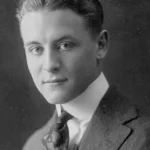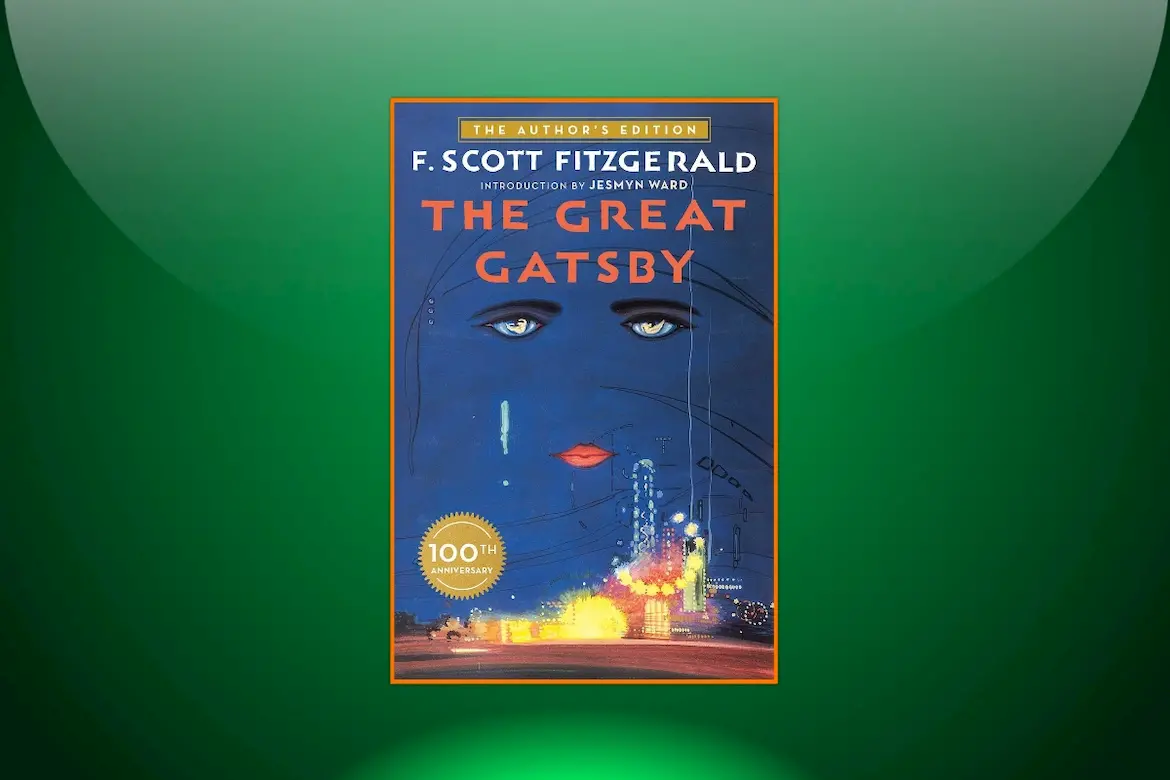One hundred years after the publication of The Great Gatsby, the hunger for wealth, fame and notoriety is as prevalent and dangerous as ever. Kiyo Mizuki’s review explains how.
Table of Contents
The Great Gatsby
Chasing Fantasies One Hundred Years Later
You might not think that the tragic tale of F. Scott Fitzgerald’s James Gatz in the novel The Great Gatsby, would resonate today. However, just as the character of James Gatz reinvented himself as “Jay Gatsby,” young people create online personas for themselves across sites like TikTok, YouTube, and Instagram. And yet, fame is a goal most strive for but seldom achieve. Some are lucky, managing to fulfill their dreams, but online personas, which rely on views and viral exposure, rarely achieve the hoped-for level of fame. Some online personas, or influencers, never attain the heights of fame they desire, and some have endings like Gatsby’s, with unhappiness and failed dreams. Others meet dubious ends, like Nikocado Avocado, an American YouTuber who ate himself to obesity and back for the sake of views, and though he achieved viral fame, ended up hurting his longtime positive reputation.
Tastes and Predilections Turned Decadent
The 1920s, as The Great Gatsby depicts, was a time of lavish partying and reckless behavior. In the aftermath of World War One, people’s tastes and predilections turned decadent: they lived for the moment, wore outrageous new fashions (for women, especially, the Victorian-era corsets and covered-up styles vanished), and spent their newly-gained wealth on things that would soon become meaningless. As The Great Gatsby’s narrator, Nick Carraway, says: “At least once a fortnight a corps of caterers came down with several hundred feet of canvas and enough colored lights to make a Christmas tree of Gatsby’s enormous garden.” As Fitzgerald’s classic novel The Great Gatsby turns one-hundred-years-old, materialism in American culture is seen now with young capitalists and teenagers who have amassed large amounts of money in a short period via social media platforms.
In the way we’ve recently become used to seeing, Jay Gatsby flaunted his ability to spend money to anyone who would pay attention. He had something to prove—that he was one of the elite, that he’d reached their level of untouchable greatness. He did this even when he was not well-received by those he was attempting to impress. As Tom Buchanan, husband of Daisy, says, “An Oxford man!… Like hell he is! He wears a pink suit.” These days, young people tend to buy designer clothes and accessories and show off their possessions as a form of social and economic capital. They share the fabulous things they’ve acquired online in hopes of being recognized as “great” and in a class separate from the ordinary world. Fitzgerald alludes to this motive in the poem by Thomas Parke D’Invilliers that is the epigraph to The Great Gatsby:
Then wear the gold hat, if that will move her;
If you can bounce high, bounce for her too,
Till she cry “Lover, gold-hatted, high-bouncing lover,
I must have you!
In The Great Gatsby, though the reader is introduced to Gatsby as a perfect and charming man who lives his desired life, this perception is soon shattered when he is exposed for what he is, a depressed man who lacks friends. This suggests an isolation not unlike that caused today by “going viral” or being known as “popular.” We come to understand that Gatsby, despite his wealth, is rich only in material things and uses his wealth to measure everything else, as here, in an exchange between Gatsby and Nick.
“Her voice is full of money,” he said suddenly.
That was it. I’d never understood before. It was full of money—that was the inexhaustible charm that rose and fell in it, the jingle of it, the cymbals’ song of it.
The “modern-day Gatsbys”—those young people who, while seeking fame and riches, lose bits of themselves along the way—deviate from the path of authenticity to become someone they think others will like. The media is filled with reports of successful (often rich) influencers hurting themselves, becoming suicidal, or describing immeasurable amounts of loneliness despite the heights of their perceived success. Like Gatsby, they have “everything,” and yet have nothing at the same time.


A Character Who Chases Dreams
Fitzgerald wrote The Great Gatsby as a form of social commentary. The story takes place in the post-war world of Fitzgerald’s lifetime. He wrote about the materialistic aspirations developing in those who had returned home from the battlefields of World War I with nothing and put those same qualities into the philosophy of his central character: Gatsby. Fitzgerald shared his own opinions on materialism, consumerism, and chasing dreams. As the novel illustrates, Fitzgerald understands the culture he lives in, seeing both the beautiful things it produces and the horrible tragedies it can create. Because of this, Gatsby’s story has retained its importance and endurance. Young people still strive for the “perfect” things and hold them over the more important non-material aspects of life.
While Fitzgerald explored the social issues of his time through The Great Gatsby, he also embodied them. In many ways, Fitzgerald is Gatsby. In 1936, twelve years after he wrote the novel, Fitzgerald published an essay titled The Crack-Up that details the struggles he experienced near the end of his life. An author with “inalienable friends and supporters,” who struggled with alcohol addiction and had “not tasted so much as a glass of beer for six months,” Fitzgerald had, by most standards, achieved success. Yet he was unhappy, and here, referring to himself in the third person, he explains: “…it was his nervous reflexes that were giving way—too much anger and too many tears.” Fitzgerald became dissatisfied with his life despite his achievements. Even though he should have been happy, he explains, “I had a strong sudden instinct that I must be alone. I didn’t want to see any people at all.”
An example of a contemporary Gatsby may be singer and celebrity Demi Lovato, a child-star who originally made her debut on the Disney Channel in 2007. Lovato had a relatively normal childhood before her Disney career, until wider notoriety brought a transition from an up-and-coming child star to an idolized teen superstar with a strong social media presence. Lovato is now a wealthy young woman living a privileged life many would envy, yet despite this, in 2018, at age twenty-five, she had a drug overdose shortly after releasing a song about her struggles to maintain her sobriety. It’s only when I’m lonely, Lovato sings in “Sober,” that she would take drugs or other substances.
Like Lovato, Fitzgerald struggled with hereditary alcoholism. By age 24, his habits of excessive drinking had surfaced and worsened over time. According to Dr. Howard Market, Fitzgerald’s abuse of alcohol had dire effects: “Between 1933 and 1937, Scott was hospitalized for alcoholism 8 times and thrown in jail on numerous occasions.” On December 21, 1940, at age 44, Fitzgerald suffered an alcohol-induced heart attack and subsequently died. At the time, he was writing a new novel, The Last Tycoon, and his death occurred in a Gatsby-like fashion, in which he was dissatisfied and left his work unfinished.


An Unquiet Life
Fitzgerald’s death was documented as mundane and even peaceful. An article in the Los Angeles Times, titled “Death Takes Fitzgerald,” noted, “His life in Hollywood has been quiet.” This is untrue, as Dr. Market’s article shows. Fitzgerald spent the last years of his life trying and ultimately failing to be a screenwriter—ignoring his health and excessively partying. Fitzgerald’s demise exemplifies in tragic fashion the media’s role in the materialistic dreams of American youth. Media perpetuates wealth as the greatest form of success by downplaying, and often censoring, the loneliness and loss of privacy and normalcy in the lives of the famous. Like F. Scott Fitzgerald, if youth cannot see the potential tragedy they are part of, this cycle of desiring, achieving, and falling from grace is bound to continue.
In The Great Gatsby, Gatsby is murdered by George Wilson for an incident spurred on by his love for Daisy. For Gatsby, Daisy embodies the dream. He never stopped believing he could possess her, represented by his belief that “tomorrow we will run faster, stretch out our arms farther….” Like modern-day youths who strive for fame, Gatsby cannot shake off his dreams.
Fitzgerald concludes The Great Gatsby with the now-iconic line, “So we beat on, boats against the current, borne back carelessly into the past.” No matter what horrible end may befall them as a result, people will always “beat on against the current,” and as the riches-and-fame-centered media climate attests, those making the dreams and those consuming them will go on chasing their fantasies.
~ Kiyo Mizuki
About F. Scott Fitzgerald

F. Scott Fitzgerald was born in St. Paul, Minnesota, in 1896. He attended Princeton University, joined the United States Army during World War I, and published his first novel, This Side of Paradise, in 1920. That same year he married Zelda Sayre and for the next decade the couple lived in New York, Paris, and on the Riviera. Fitzgerald’s masterpieces include The Beautiful and Damned, The Great Gatsby, and Tender Is the Night. He died at the age of forty-four while working on The Last Tycoon. Fitzgerald’s fiction has secured his reputation as one of the most important American writers of the twentieth century.
Other Titles by F. Scott Fitzgerald


Other LitStack Resources
Be sure and look at our other LitStack Reviews for our recommendations on books you should read, including reviews by Lewis Buzbee, Lauren Alwan, Allie Coker, Rylie Fong, and Sharon Browning.
As a Bookshop, Malaprop’s, BAM, Barnes & Noble, Audiobooks.com, Amazon, and Envato affiliate, LitStack may earn a commission at no cost to you when you purchase products through our affiliate links.




